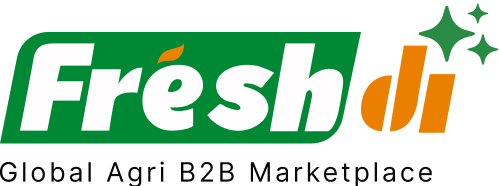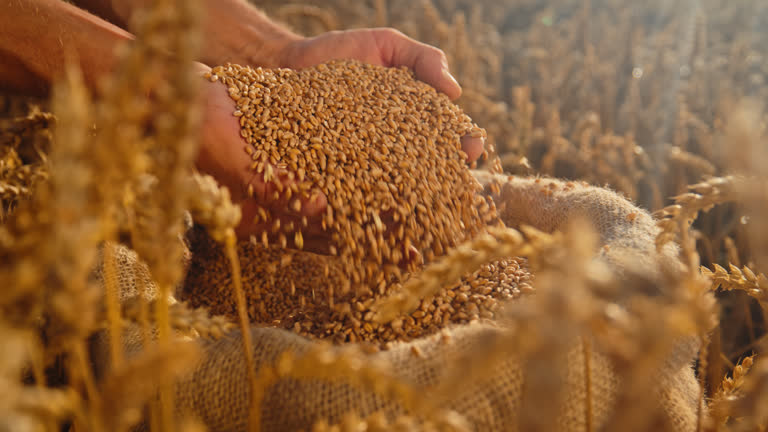Introduction – Current State of Play: The Grain Sector in Poland
Poland’s grain market in August 2025 is standing at a pivotal moment. Recent developments, from shifting EU agricultural policies to unexpected climate anomalies, are reshaping the landscape for grain production, export, and procurement across the region. For businesses sourcing grain, staying informed isn’t just helpful—it’s critical.
This summer, Poland has experienced both unseasonably high rainfall in the north and dry spells in the central plains, impacting harvest cycles and grain quality. Meanwhile, new trade agreements with Southeast Asia and North Africa are opening fresh export corridors, creating competition for local supply. Add to that the ongoing ripple effects of global conflicts and inflationary pressures—supply chains are being tested like never before.
In this fast-moving environment, agility is essential. Whether you’re a buyer, distributor, or processor, knowing who the most reliable suppliers are and how the market is shifting in real-time can make or break your sourcing strategy.
Deep Dive – Breaking News: Critical Updates & Their Effects
Let’s unpack some of the most critical updates affecting Poland’s grain market right now:
-
EU Green Deal Amendments: Poland is adjusting its agricultural subsidies and sustainability requirements to align with the revised EU Green Deal. This has led to a shift in farmer incentives, especially for wheat and barley growers.
-
New Export Deals: Poland has inked new trade pacts with Indonesia and Egypt, focusing heavily on grain exports. These agreements are expected to increase outbound shipments significantly, tightening domestic availability in the short term.
-
Climate Impacts: Torrential rains this July in northern Poland have delayed the barley and rye harvest, while central regions face yield reductions due to drought. These weather extremes are affecting grain quality and logistics.
-
Logistics Upgrades: The Port of Gdańsk has expanded its grain terminal capacity, aiming to streamline exports and reduce bottlenecks—good news for international buyers.
-
Tech Investments: Several grain cooperatives and private firms have begun integrating smart agriculture tools, including drone monitoring and AI-based yield prediction, improving overall output in more tech-savvy regions.
These developments are sending ripples throughout the supply chain, shifting the balance of demand and supply and highlighting the importance of verified, agile suppliers.
Top 10 Verified Grain Suppliers in Poland – Navigating Current Market Realities
Based on export records, certifications, supplier reviews, and real-time activity insights from Freshdi, here are the top 10 grain suppliers in Poland for August 2025. These firms are recognized for their consistent performance, adaptability, and verified buyer feedback.
-
SPOJNIA HODOWLA I NASIENNICTWO OGRODNICZE SP. Z O.O.
Known for premium seed grains and innovative breeding programs, Spójnia is a top choice for buyers looking for both quality and consistency. -
JS FARM
A staple in Poland’s grain export landscape, JS Farm offers a wide portfolio including wheat, barley, and corn, with reliable logistics and certifications. -
PRZEDSIEBIORSTWO ROLNE AGROJAR SP Z O O
Agrojar is gaining traction for its sustainable practices and traceable grain production—ideal for eco-conscious buyers. -
BAK – ROL
A dynamic supplier with a strong foothold in both domestic and export markets, BAK-ROL is especially known for timely order fulfillment. -
TRANS-PAL S.GZIK SP.K.
Specializing in logistics-integrated grain supply, TRANS-PAL ensures smooth cross-border operations and is favored by bulk buyers. -
PROFIT SP.Z O. O.
With a focus on corn and feed-grade wheat, PROFIT is a high-volume player trusted by feed mills and large-scale processors. -
ROLIMPEX-NASIONA W WARSZAWIE ZAKLAD W ILAWIE SP ZOO
A historic brand with modern capabilities, Rolimpex offers high-purity seed and grain varieties, specializing in regional grains. -
KOMBINAT ROLNY SZESTNO SP. Z O.O.
An integrated agricultural group, this supplier controls the full supply chain—from field to port. -
POLBOTO SP. Z O.O.
Known for their export efficiency and flexible MOQs, POLBOTO is a rising star in the cereal grains segment. -
EEC POLAND LTD
While best known for rice, EEC Poland also trades in specialty grains and pulses, with strong quality control and international reach.
Dynamic Ranking Note:
Freshdi updates supplier rankings regularly based on real-time RFQ activity, export volumes, and buyer feedback. Be sure to check the “Suppliers of the Month” section on Freshdi for the latest movers and shakers.
Market Navigation – Strategic Responses to The Current Grain Landscape in Poland
So, how should your sourcing strategy adapt to these times?
First, expect tighter domestic availability due to growing export demand from new trade deals. If you’re sourcing wheat or rye, secure contracts earlier than usual or consider suppliers in less-export-focused regions of Poland.
Second, climate volatility is a real risk this season. Buyers should focus on suppliers with robust quality assurance measures and diversified sourcing zones. For example, northern suppliers may face delayed shipments due to recent rains, while central Polish suppliers might offer lower yields but faster logistics.
Third, consider long-term partnerships with tech-forward suppliers. Those investing in AI and drone monitoring are proving more resilient against climate issues and can offer higher consistency month-to-month.
Finally, use platforms like Freshdi to monitor RFQ trends. If RFQs for a specific grain spike, that’s often a leading indicator of price increases or tightening supply.
Short-Term Outlook by Grain Type:
- Wheat: Moderate price increase expected due to stronger exports; consider locking rates.
- Barley: Delayed harvests in the north could constrain supply in September.
- Corn: Stable so far, but rising demand from feed producers may push prices up.
- Rye: Drought-impacted regions may limit availability; look to northern suppliers post-harvest.
Conclusion – Key Takeaways for Businesses in a Fast-Moving Market
The Polish grain market in August 2025 is anything but static. Climate shifts, new export deals, and evolving EU policies are all playing a role in shaping the current sourcing landscape.
To stay competitive, businesses need to:
- Monitor real-time data and supplier performance.
- Prioritize flexibility and risk management in sourcing contracts.
- Invest in relationships with verified, resilient suppliers.
Freshdi provides a vital edge here. With tools for RFQ trend tracking, verified supplier matchmaking, and active market insights, it’s an essential partner for any business navigating the grain trade in Poland.
Key Takeaways
- Poland’s grain market is experiencing major shifts due to weather, trade deals, and EU policies.
- Verified suppliers like JS FARM and SPOJNIA are critical for reliable sourcing.
- Use platforms like Freshdi to stay on top of trends and supplier performance.
- Adapt your sourcing strategy based on grain type and regional climate impact.
- Expect dynamic changes—flexibility and data-driven decisions are key.
Grain Sourcing Checklist for August 2025
✅ Check supplier harvest updates
✅ Review RFQ activity on Freshdi
✅ Lock in prices for high-demand grains
✅ Evaluate logistics from port to warehouse
✅ Shortlist suppliers with climate-resilient operations
Future Outlook: What’s Next for the Grain Market in Poland?
Looking ahead, expect increased digitalization in supply chains, greater demand from North Africa and Asia, and continued volatility due to climate events. Future-focused buyers should consider long-term contracts, climate data integration, and supplier diversification—key areas where Freshdi can offer insights and tools to make smarter decisions.
FAQs
1. What is the most in-demand grain from Poland in August 2025?
Wheat leads demand, especially after new deals with Egypt and Indonesia. Rye and barley follow closely, though supply is tighter.
2. How can I verify Polish grain suppliers?
Use platforms like Freshdi which provide supplier reviews, certifications, and dynamic RFQ stats.
3. Why are grain prices rising in Poland?
Increased exports, weather disruptions, and rising logistics costs are tightening supply and pushing prices higher.
4. What’s the best region in Poland to source grain from right now?
Central and southern Poland are more stable in terms of yield and logistics—northern areas are facing rain-related delays.
5. How often are Freshdi’s supplier rankings updated?
Freshdi updates rankings monthly, with special highlights like “Supplier of the Month” reflecting real-time performance and buyer feedback.


